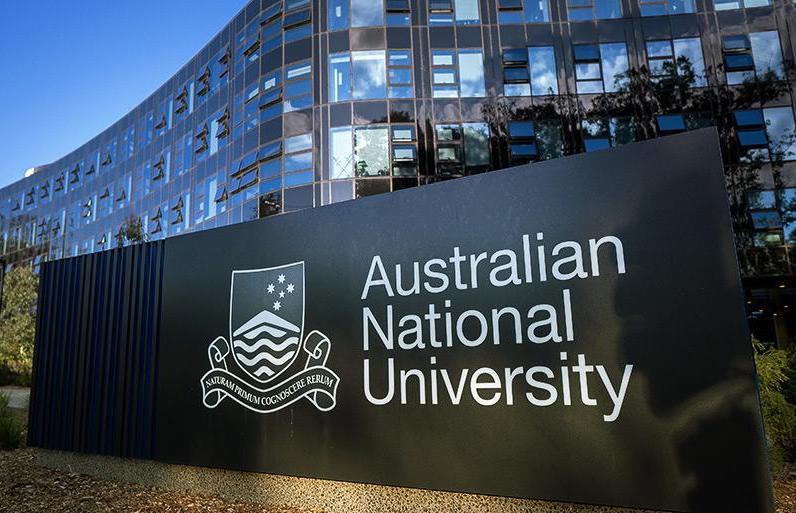Science and secrecy are two words that rarely go well together. Yet remarkably, our peak scientific institution, the Australian Academy of Science is deliberately engaging in secrecy, aided and abetted by the Australian National University. Transparency Warrior Rex Patrick tells the story.
Embarrassing FOI refusal
Back in January, knowing the Safeguard Mechanism legislation that underpins Labor’s key climate change policy (which we now know, flawed) would be debated in the upcoming parliamentary sitting, I FOI’ed a paper written by Australian National University Associate Professor, Cris Brack, on ‘the “science” of measuring carbon credits for human-induced regeneration’.
This document was input to an Australian Academy of Science study that was, in turn, a contribution to a review of carbon credit Integrity by former Chief Scientist Professor Ian Chubb (‘the Chubb Review’).
Earlier this week, at the request of the Academy, the ANU refused me access to Brack’s paper, giving elaborate reasoning as to why it wasn’t in the public interest to release the document.
The embarrassing problem for the ANU is that, two days prior to their access refusal, the document was submitted to the Senate’s web site by Professor Chubb himself, ironically, a member of the Academy’s council.
Integrity failure
‘Human-induced regeneration’ is a carbon capture method. It involves the regeneration of native forests in areas that have previously been cleared. Last financial year, almost 40% of all Australian Carbon Credits issued went to human-induced regeneration projects.
The model that establishes their carbon offset value assumes the land areas that are credited have no (or very few) mature trees and that they regrow evenly across the site as a consequence of the project activities.
Unfortunately, the vast majority of the areas being credited under ‘human-induced regeneration’ have never been comprehensively cleared. They contain intact native vegetation, including substantial numbers of mature trees and shrubs.
This means the projects are being credited to regrow trees that are already there.
It’s a fraud on the both the taxpayer and the environment yet there are people making either a lot of money or pollution from it, and don’t want the status quo disturbed.
Chubb Review
Following Labor’s federal election win in May last year, the Minister for Climate Change and Energy, Chris Bowen, commissioned the Chubb Review to “ensure Australian Carbon Credit Units and the carbon crediting framework maintain a strong and credible reputation supported by participants, purchasers and the broader community”.
The Academy was given a $50K government contract to produce a 31 page study onto the four big methods for generating carbon credits. In turn, the ANU’s Associate Professor Brack was asked to produce a paper on ‘the “science” of measuring carbon credits for Human-induced regeneration’ (the document I FOI’ed).
Brack gave a blunt assessment of the ‘Human-induced regeneration’ discussing weaknesses of the method. Brack’s concerns did not make it into the Academy’s report, nor the Chubb review report.
Transparency failure
On 27 February 2023, at the Senate Inquiry into the Safeguard Mechanism, Senator David Pocock raised questions about the concerns over ‘Human-induced regeneration’. Witness Dr Megan Evans responded,
“It was strange that that wasn’t even addressed, at all, in the Chubb review, even though their terms of reference required them to look at the integrity issues that have been raised, and this was one of our No.1 issues.”
She went on to observe, “ … there’s a list of five reports that we are aware of regarding the human induced regeneration method that have been commissioned by either the Clean Energy Regulator or the Department and that are not in the public domain. I would urge you to consider seeing whether you could find these reports, because they should be in the public domain.”
Three days later, Professor Chubb, clearly concerned about the look, made a very quick submission to the Senate inquiry saying, “ … I have followed the evidence given to the Inquiry in its public hearings … “, defended his report, and went on to add, “… I have Associate Professor Brack’s permission to attach the paper to this submission.”
Transparency knock-back
Brack’s paper had been passively held secret by Government. That is, they just didn’t publish it.
But the ANU, complicit to the wishes of the Academy desires and inconsistent with FOI law, actively held Brack’s paper secret in response to an FOI request.
When I made the request in January for the Brack’s report, the ANU sought an additional 30 days on top of the standard 30, to consult on the 2 page document. The University said “We did approach the commissioning organisation to seek its permission to provide the report, but this was denied. ANU takes objections from partner organisations and third parties into consideration when making determinations on FOI requests”.
However, FOI law makes it clear it was the University’s choice, even if the Academy objected, to release the document. The exemptions claimed was subject to a public interest override.
How could releasing a report that went to the integrity of a multi-billion public carbon credit program not be in the public interest? How could releasing a report relevant to the Labor Government’s key climate change legislation, just as it was about to be debated in the Parliament, not be in the public interest?
Australian Academy of Secret Science
I asked a series of very specific questions of the Academy, an organisation that, in its own words, exists to “to promote, declare and disseminate scientific knowledge’ about why they wanted the taxpayer funded document hidden from public view.
The Academy resorted to a very general and political answer.
There is no place for secrecy at the Academy. There is no place for politics either. Neither of those features would be reflective of the multitude of genuinely eminent scientists that lend their name to that important institution.
ANU shallow answers
ANU’s Vice Chancellor, Professor Brian Schmidt, knowing I was going pen this article, wrote to me on Friday, claiming “we were unable to release the report”. But that’s just not true. They chose not to.
Strangely, departing from his confident ‘we couldn’t’ assertion, he went on to say “The University’s FOI office also works independently within the University” as if to say, “don’t blame the University”.
Sorry Professor Schmit! As Vice Chancellor it’s your responsibility to ensure your FOI delegates are trained in the Act and appreciate the importance of a pro-disclosure culture (which it clearly doesn’t exists if you’re minded that the report couldn’t be released).
The ANU is a great university, but events like this rightfully put a dent in its reputation and the university’s leadership needs to reflect on what has happened here, appreciating that the community is sick and tired of secrecy. They could do much better.
Rex Patrick on Labor’s Safeguard Bill: bigger holes than the Ozone but not beyond repair
Rex Patrick is a former Senator for South Australia and earlier a submariner in the armed forces. Best known as an anti-corruption and transparency crusader - www.transparencywarrior.com.au.


